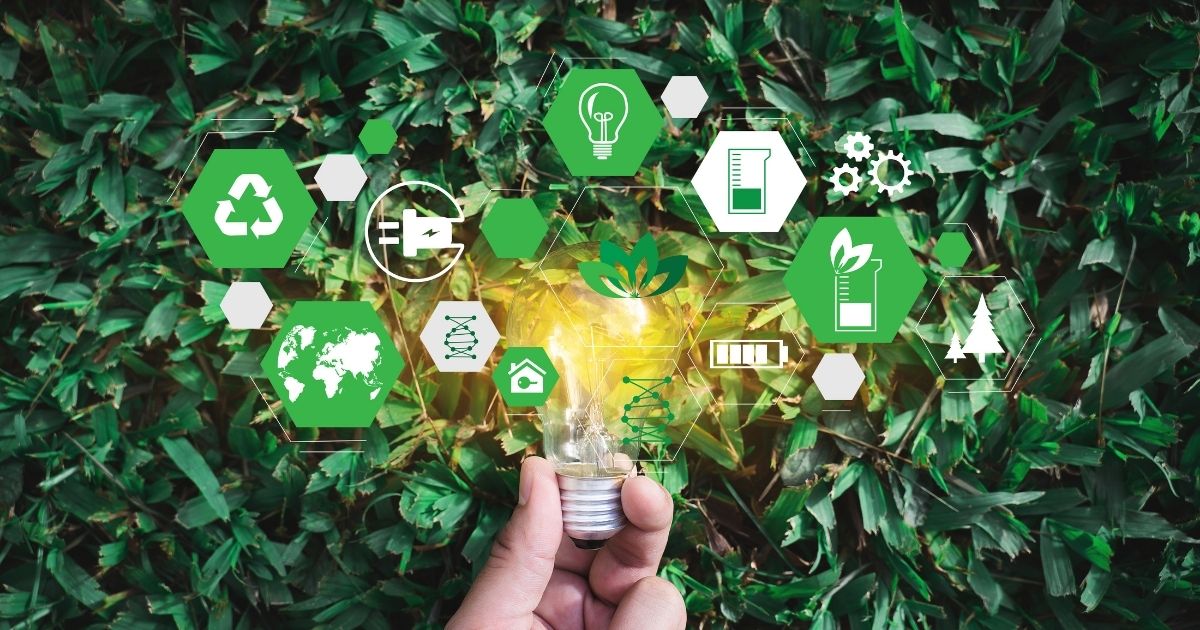- Who We Are
- What We Do
- Success Stories
- Careers
- News & Events
- Contact us

The Internet of Energy is a field that utilises Internet of Things technologies to optimise energy consumption to decrease negative environmental impacts. It focuses on the industry and, more specifically, on buildings and smart homes, where, for example, the thermal coating of the building acts as a solar panel and controls the indoor temperature.
The Internet of Energy combines technologies such as the IoT, cloud computing, machine learning, blockchain, and artificial intelligence to enable new and different ways of interacting with buildings and homes. Moreover, the Internet of Energy is expected to create new business models that will benefit people, businesses, and society.
The Interest in the Internet of Energy
The Internet of Energy has a great deal of potential. While several companies are working on these technologies, further development is needed, and there is a lot of work to be done in the field. For example, there is a need for a common language across the area and in the industry as well as new business models. Furthermore, the market is currently small and fragmented due to the lack of understanding of the technology.
The Internet of Energy is an exciting new field that could have a significant impact on the world. The Internet of Energy is not a new concept, but it’s currently amidst an exciting transformation. The Internet of Energy is still in its infancy, but it could potentially solve many of the world’s (most pressing) problems.
Current Structures and Developments
The Internet of Energy is an emerging field involving both new technologies and new business models. The complexity of the area can be seen from the vast number of existing parties that participate in the field, including the following:
● Energy companies – Energy companies are typically major companies, which can boost the technological development of the field but are also often slow to embrace new technologies.
● Building companies – Large building companies, such as Apple, Google, and Microsoft, have the power to transform the field, especially when they decide to actually build the technology in their buildings.
● Startups – Startups are a driving force behind the field, and they are flexible and creative. They allow the field to experiment with new technologies. Startups are sometimes too ambitious and fail to accomplish their goals, but they also enable the area to break new grounds.
● Academic and research departments – Academic and research departments hold the key to new insights, technology, and knowledge. Universities and institutes usually have a wealth of knowledge and time and money to spend on research and development.
● Consumers – Consumers are a driving force behind the field, as they choose to buy certain products and services (e.g. cars). They also push technological developments and trends.
● Governments – Governments are needed for tax benefits and financial support. They also require companies to comply with certain standards and regulations but can also offer tax breaks and grants to encourage technology development.
● Real estate – Real estate and property management companies are needed for property ownership and management. Real estate companies are responsible for maintenance as well as major upgrades.
● Energy producers – Energy producers produce and sell electricity. Some energy producers are responsible for ensuring the quality of the energy, while others focus on energy production.
● Energy transporters – Energy transporters are responsible for transporting energy to its destination. They are responsible for the infrastructure as well as the distribution and accessibility of the power.
Conclusion
The Internet of Energy is the field of technologies and business models for maintaining, improving, and optimising the energy consumption in buildings and homes. It has the potential to improve people’s lives and make the world a better place.
With a primary focus on custom software development, we specialize in infrastructure solutions and services through years of experience and knowledge in the industry. Explore the possibilities on our website today!
Written by Daniele Paoletti
